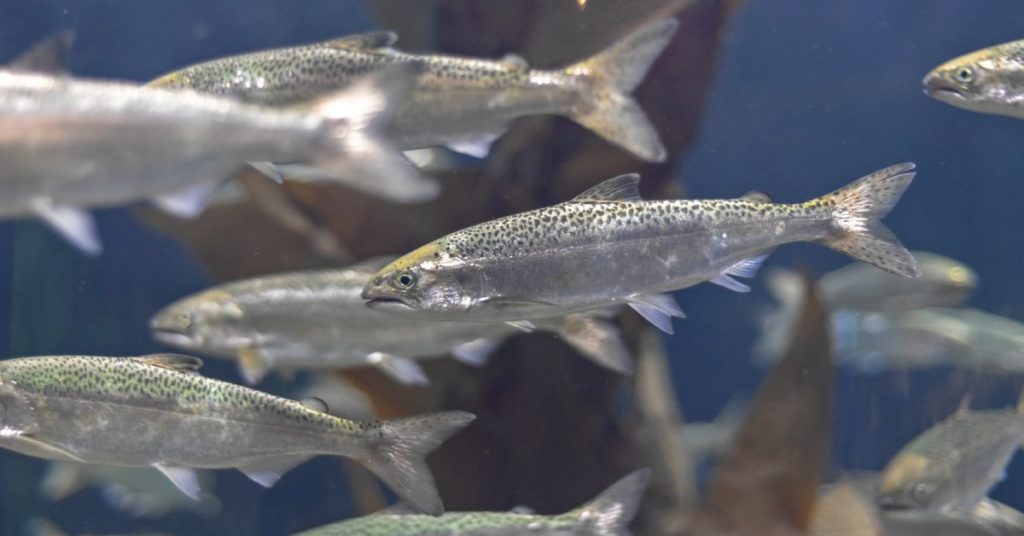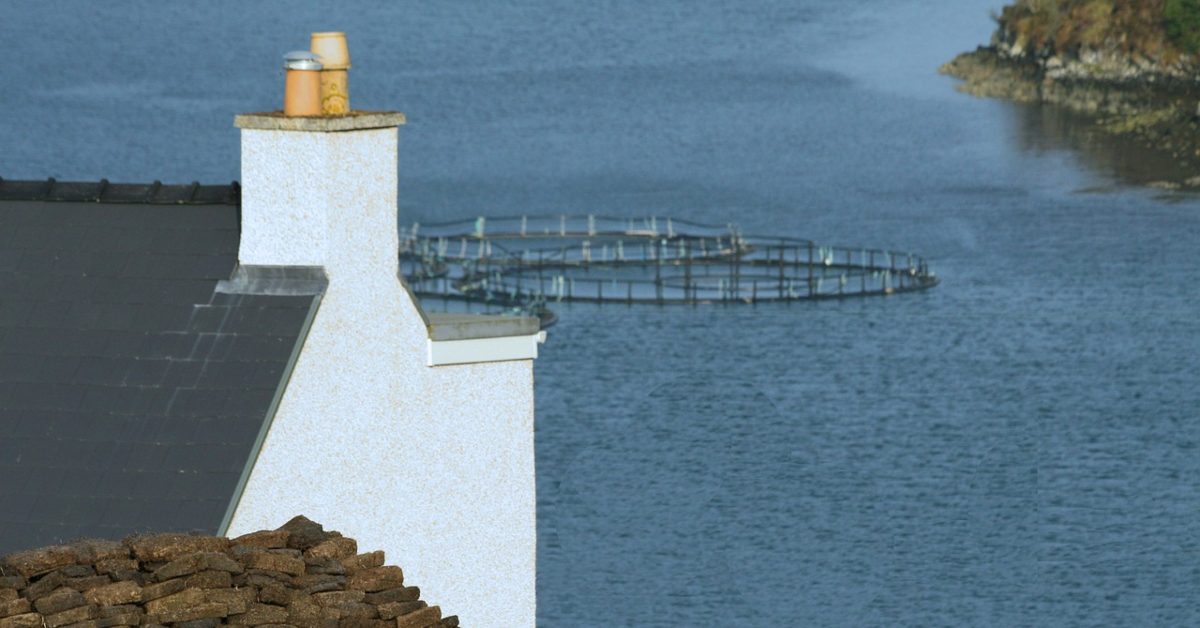As a relatively new (and rapidly growing) sustainable solution to food production, salmon ocean farming has been the subject of intensive environmental scrutiny. While a robust dialogue on the topic is welcomed, it also appears that there is a great deal of misinformation in the pubic discourse.
Let’s clear up some of the confusion with regards to salmon feed conversion ratios for ocean farmed salmon.
Ocean-Farmed Salmon Feed Conversion
It is more important than ever to find sustainable ways, such as ocean-farming, to provide protein sources for both humans and other animals.
Salmon feed conversion ratios (FCRs) are an important measure of the efficiency of salmon farming. The lower the FCR, the more feed salmon consume to produce a given amount of flesh. As the price of feed rises, it becomes increasingly important to achieve high FCRs.
It is the ratio of feed intake to weight gain. For example, if a fish farmer feeds 1 kg of fish feed to a fish and the fish gains 1.5 kg, the FCR would be 1.5 (1/1.5).
There are many factors that affect the FCR, including the age and size of the fish, the quality and type of feed, water temperature, and disease. Improving the FCR is an important goal for fish farmers, as it improves their profits margins, and therefore the price brought to market.
There are a number of ways to improve salmon feed conversion ratios. One is to select feed ingredients that are as digestible as possible. Another is to develop feeds that are tailored to the specific needs of different strains of salmon. Feeds can also be supplemented with probiotics and other additives that improve digestion and nutrient uptake.
Ocean-farmed salmon represent a significant ecological advantage in terms of feed conversion, meaning that it takes fewer calories of feed to produce one pound of salmon than it does to produce one pound of beef or pork.
Furthermore, the feed conversion efficiency of the ocean-farmed salmon is significantly better than the feed conversion efficiency of the land-based salmon. This represents a significant ecological advantage in terms of sustainable development.
Production Efficiency
Wild salmon is an expensive fish and it is getting more and more expensive. For example, market value of wild salmon in 2002 was $3.2 billion, while it was $4.9 billion in 2012, and is projected to be close to $9.8 billion by the end of 2022. This increase has been driven by increased demand for salmon, as well as a decrease in supply due to decreased stocks of wild salmon.

In order to capitalize on this demand and at the same time help the environment, ocean-farmed salmon are becoming increasingly popular in parts of the world, in particuluar in Northern Europe.
This is driven by the fact that salmon ocean farms are the most efficient way to reduce the ecological cost to natural forage populations, and collateral damage. According to a new study from the National Oceanic and Atmospheric Administration (NOAA) Fisheries, fish farms in U.S. waters kill less than 1 percent of marine mammals annually. This means that farm-raised salmon cause 99 percent fewer deaths of marine mammals compared to wild fish.
The forage fish used in salmon ocean farming feed are fast-growing and short-lived fish not generally used for human consumption. The Food & Agricultural Organization of the United Nations confirms that forage fish are not over-fished or depleted.
The amount of feed required for a given quantity of salmon can be determined by knowing the protein efficiency ratio (PER) of the fish. This is calculated by dividing the weight gained by the fish during an experiment, by the weight of the feed fed during that time. A PER of 2 indicates that twice as much fish weight was produced as feed weight. For example, if 1 kg of feed produces 2 kg of salmon, then the PER would be 2:1.
Ocean-Farmed Salmon Feed Conversion
Every pound of salmon requires one-and-a-half pounds of fishmeal, a ratio far more efficient than other farmed animals.
The following chart illustrates this comparison:
| Ratio of Feed Required : Edible Food Produced | |
| Wild Salmon | 15 : 1 |
| Beef | 10 : 1 |
| Pork | 5 : 1 |
| Chicken | 2 : 1 |
| Ocean-Farmed Salmon | 1.5 : 1 |

